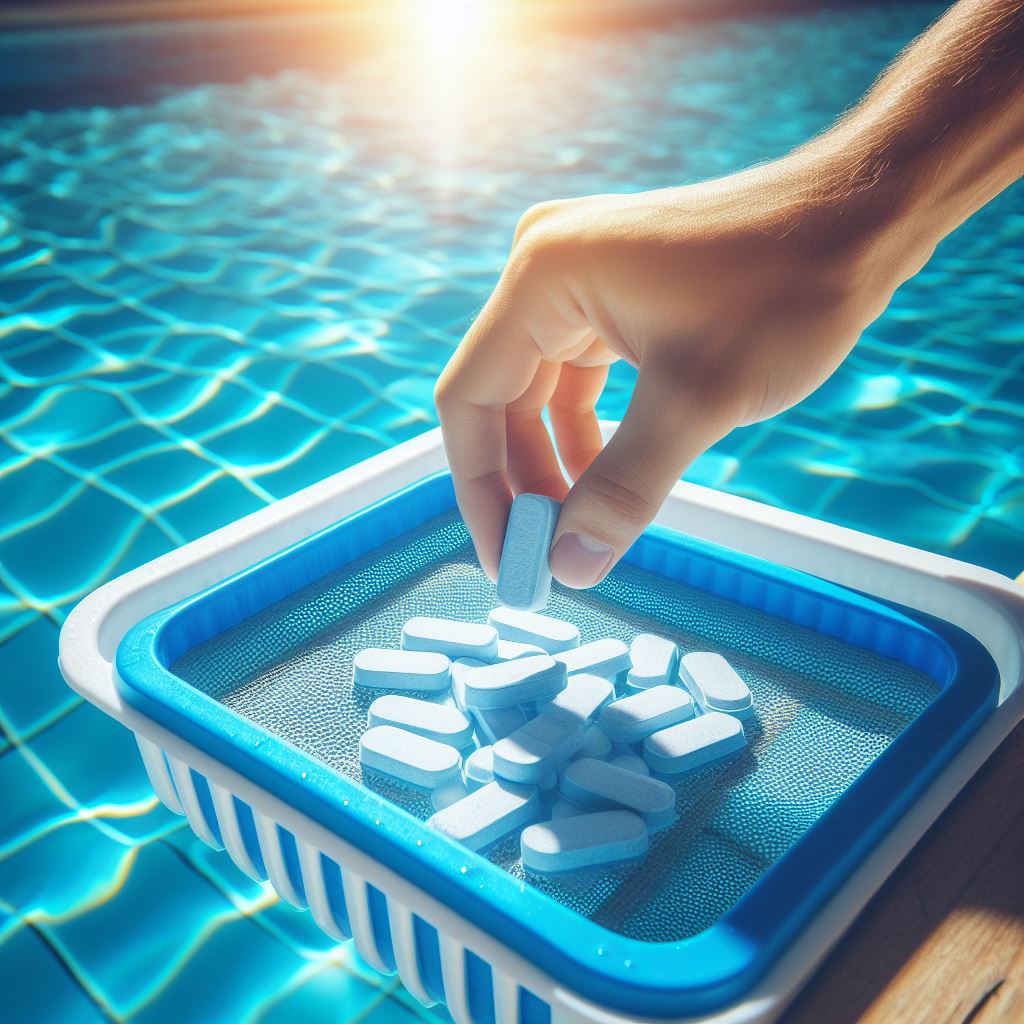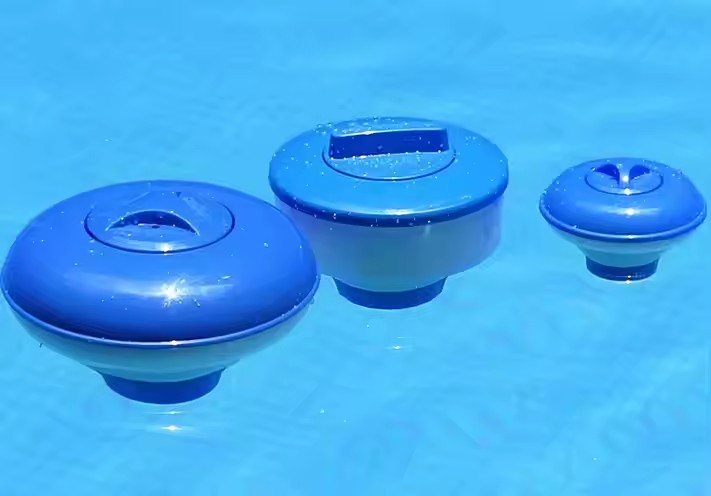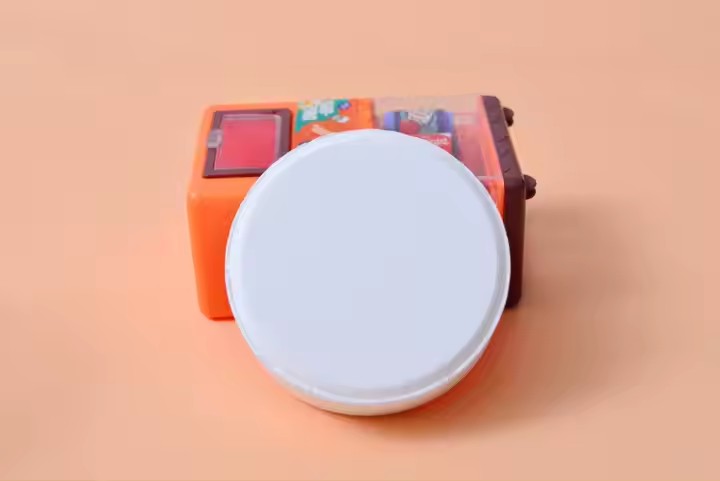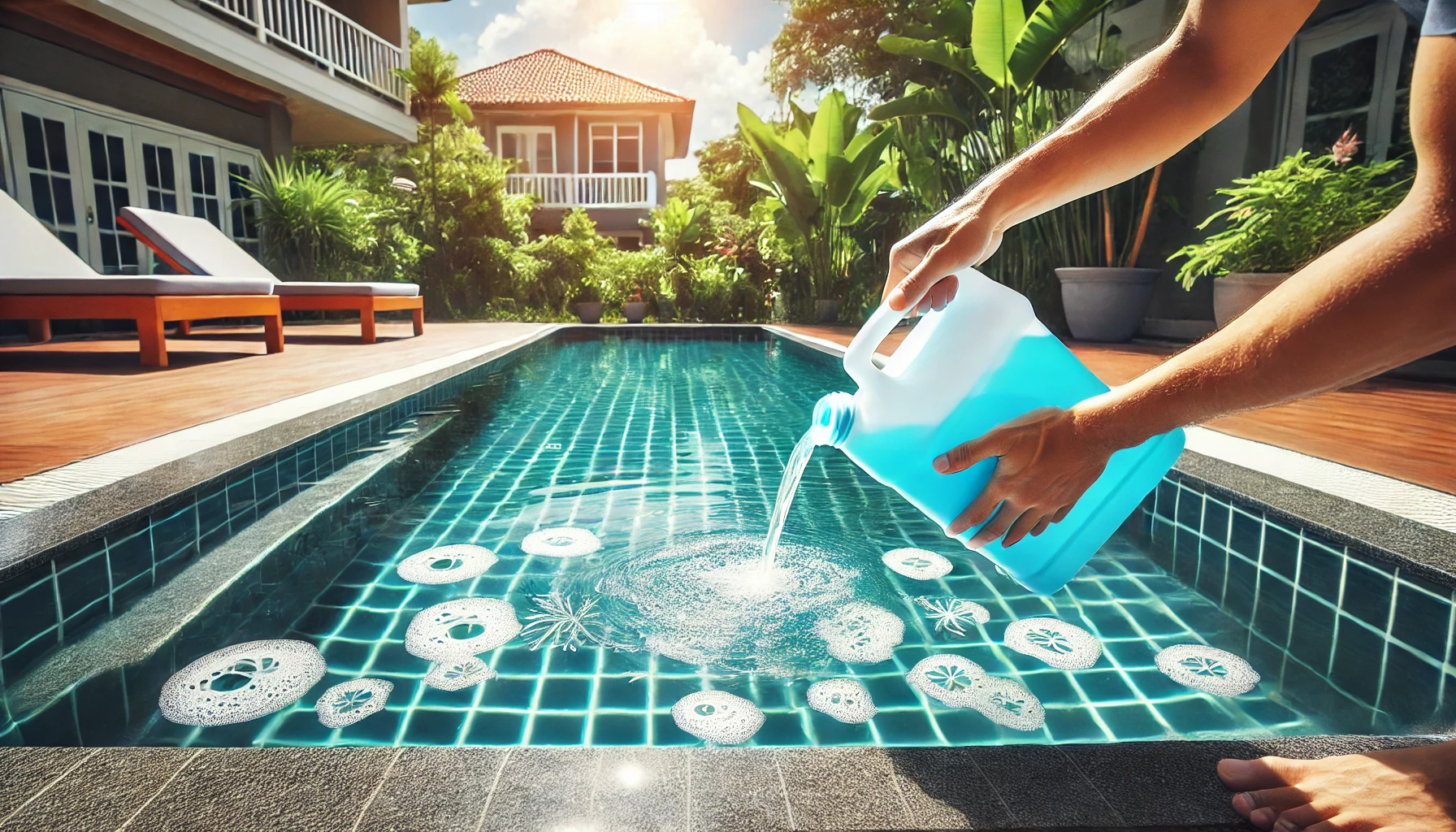Maintaining the perfect chlorine balance in your pool is crucial for ensuring a safe and pleasant swimming experience. Have you ever wondered how to achieve that sparkling, clear water without a hint of chlorine odor? Or perhaps you’ve battled with cloudy water and algae growth despite your best efforts. This guide will take you through the steps of using chlorine tablets effectively to maintain the ideal chlorine levels in your pool, making your pool maintenance routine straightforward and efficient.
Understanding Chlorine and Its Role in Pool Maintenance
What is Chlorine?
Chlorine is a powerful chemical used in pools to kill harmful bacteria and prevent the growth of algae. It acts as a sanitizer, disinfectant, and oxidizer, making it an essential component in pool maintenance. Chlorine helps in breaking down organic contaminants such as sweat, urine, and other debris that can end up in your pool.
Why Maintain Proper Chlorine Levels?
Maintaining proper chlorine levels in your pool is critical for several reasons. Firstly, it ensures the water is safe for swimmers by killing harmful pathogens. Secondly, it keeps the water clear and visually appealing. Lastly, proper chlorine levels prevent the growth of algae and reduce the need for shock treatments, saving you time and money in the long run.
Choosing the Right Chlorine Tablets
Types of Chlorine Tablets
There are primarily two types of chlorine tablets used in pool maintenance: trichlor (trichloroisocyanuric acid) and dichlor (dichloroisocyanuric acid). Trichlor tablets are the most common and are typically used for continuous chlorination. They dissolve slowly and have a high chlorine content. Dichlor tablets dissolve more quickly and are often used for smaller pools or spas.
Advantages of Using Chlorine Tablets
Chlorine tablets offer several benefits over other forms of chlorine, such as liquid or granular chlorine. They are easy to handle, measure, and store. Tablets dissolve slowly, providing a consistent release of chlorine, which helps in maintaining stable chlorine levels. Additionally, they often come with stabilizers that protect chlorine from being degraded by sunlight.
How to Use Chlorine Tablets Effectively
Calculating the Required Amount
The amount of chlorine tablets you need depends on the size of your pool and its current chlorine levels. Generally, one 3-inch chlorine tablet treats about 5,000 gallons of water. It’s essential to calculate your pool’s volume and regularly test the chlorine levels using a pool test kit to determine the exact amount needed.
Using a Floating Chlorine Dispenser
One of the easiest ways to add chlorine tablets to your pool is by using a floating chlorine dispenser. Simply place the required number of tablets into the dispenser and let it float in your pool. The dispenser will gradually dissolve the tablets, releasing chlorine evenly throughout the water. Adjust the dispenser’s vents to control the rate of dissolution based on your pool’s needs.
Placing Tablets in the Skimmer Basket
Another method is to place chlorine tablets directly into your pool’s skimmer basket. This method allows for a more consistent flow of chlorinated water as it passes through the pool’s filtration system. However, it’s crucial to monitor the skimmer basket regularly to ensure the tablets do not cause blockages or damage the pool equipment.
Using an In-line Chlorinator
For a more automated approach, consider using an in-line chlorinator. This device connects to your pool’s filtration system and allows you to control the flow of chlorinated water. Load the chlorinator with tablets, set the desired chlorine level, and let the system do the work. In-line chlorinators are highly efficient and can maintain precise chlorine levels with minimal effort.

Monitoring and Adjusting Chlorine Levels
Regular Testing
Regularly testing your pool’s chlorine levels is essential to ensure the water remains safe and clean. Use a pool test kit to measure the free chlorine, combined chlorine, and total chlorine levels. Free chlorine is the active sanitizer, while combined chlorine represents chlorine that has already reacted with contaminants. Total chlorine is the sum of free and combined chlorine. Ideally, free chlorine levels should be between 1-3 ppm (parts per million).
Adjusting Chlorine Levels
If your chlorine levels are too low, add more chlorine tablets or increase the setting on your in-line chlorinator. Conversely, if the levels are too high, remove some tablets or reduce the chlorinator’s flow rate. It’s also important to keep an eye on other factors such as pH, alkalinity, and stabilizer levels, as they can affect chlorine’s effectiveness.
Shock Treatments
Occasionally, your pool may require a shock treatment to boost chlorine levels quickly, especially after heavy use, rainstorms, or if the water appears cloudy. Use a high-dose chlorine shock product to eliminate any lingering contaminants and restore water clarity. After shocking the pool, allow the chlorine levels to return to normal before swimming.
Maintaining Overall Pool Health
Balancing pH and Alkalinity
Maintaining balanced pH and alkalinity levels is crucial for effective chlorine performance. The ideal pH range for pool water is 7.4-7.6, while total alkalinity should be between 80-120 ppm. Use pH increasers or decreasers and alkalinity adjusters as needed to keep these levels within the recommended range.
Regular Cleaning and Maintenance
Regularly cleaning your pool and its equipment helps maintain proper chlorine levels and overall water quality. Skim the surface, vacuum the pool floor, and brush the walls to remove debris. Clean the skimmer basket and backwash the filter as needed to ensure optimal filtration and water circulation.
Managing Stabilizer Levels
Stabilizers, such as cyanuric acid, protect chlorine from being degraded by UV rays. However, too much stabilizer can reduce chlorine’s effectiveness. The ideal stabilizer level is between 30-50 ppm. Test and adjust stabilizer levels periodically to ensure they remain within this range.
Common Issues and Troubleshooting
Cloudy Water
Cloudy water can result from low chlorine levels, poor filtration, or high levels of contaminants. Ensure your chlorine levels are adequate and your filtration system is functioning correctly. Shock the pool if necessary and clean the filter to restore water clarity.
Algae Growth
Algae growth is often a sign of insufficient chlorine levels or imbalanced water chemistry. Increase the chlorine dosage and brush the pool surfaces to remove algae. Use an algaecide as a preventive measure and ensure proper water circulation and filtration.
Strong Chlorine Odor
A strong chlorine odor usually indicates high levels of combined chlorine, which means the chlorine is reacting with contaminants. Shock the pool to eliminate combined chlorine and restore a fresh, clean scent to the water.
Eye and Skin Irritation
Eye and skin irritation can be caused by imbalanced pH levels, high chlorine levels, or contaminants in the water. Test and adjust pH and chlorine levels as needed. Ensure proper filtration and regular cleaning to keep the water free from irritants.
Conclusion
Maintaining proper chlorine levels in your pool doesn’t have to be a daunting task. By understanding the role of chlorine, choosing the right chlorine tablets, and using them effectively, you can keep your pool water sparkling clean and safe for swimmers. Regular testing and adjustments, combined with good overall pool maintenance, will ensure that your pool remains a refreshing oasis all season long. So next time you wonder how to achieve that perfect pool water, remember that authentic swords for sale might not be the only thing on your mind—keeping your chlorine levels in check is just as crucial!


